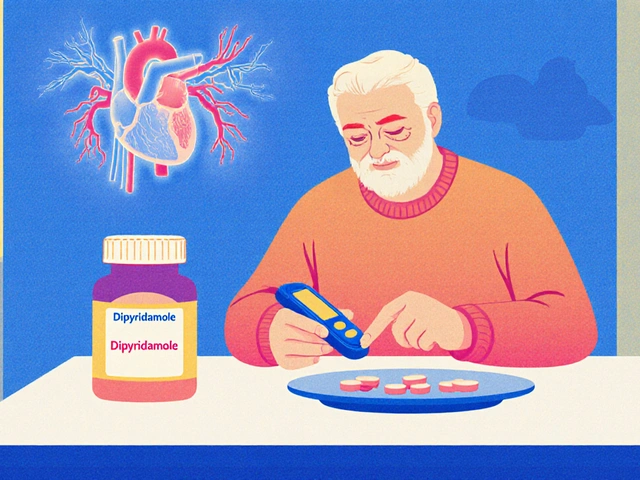Arcalion (Acetazolamide) – What It Is and Who Needs It
When you see Arcalion, the brand name for acetazolamide, a carbonic anhydrase inhibitor used in several medical conditions, you might wonder what it actually does and who needs it. In simple terms, Arcalion is a pill that shifts the balance of acids and bases in your body, which in turn can calm over‑active nerves, lower eye pressure, or help you breathe easier at high altitude. Arcalion is prescribed worldwide because it tackles very different problems with one core chemical action.
How Arcalion Works and What It Treats
Epilepsy, a neurological disorder characterized by recurrent seizures is one of the primary indications for Arcalion. The drug blocks carbonic anhydrase, which leads to a mild metabolic acidosis. This acidic shift dampens neuronal excitability, making seizures less likely. Doctors often turn to Arcalion when other anti‑seizure meds don’t control focal seizures or when patients need a non‑sedating option.
Another classic use is for altitude sickness, the collection of symptoms caused by rapid ascent to high elevations. By causing the kidneys to excrete bicarbonate, Arcalion forces the body to breathe faster and deeper, boosting oxygen levels. This physiological boost can prevent the dreaded headache, nausea, and dizziness that many hikers experience above 2,500 meters.
Eye doctors also prescribe Arcalion for glaucoma, a condition where increased intra‑ocular pressure threatens optic nerve health. The same carbonic anhydrase inhibition reduces fluid production inside the eye, lowering pressure and protecting vision. It’s especially helpful for patients who can’t tolerate beta‑blocker eye drops.
These three applications illustrate three semantic connections: Arcalion (subject) → inhibits carbonic anhydrase (predicate) → reduces neuronal excitability, ventilation drive, and intra‑ocular fluid (objects). In other words, the drug’s core mechanism enables it to manage seizures, altitude‑related hypoxia, and eye pressure alike.
Beyond the big three, Arcalion pops up in a handful of niche scenarios. Some neurologists use it for certain rare metabolic disorders like periodic paralysis, where shifting pH can stabilize muscle membranes. A few dermatologists explore its off‑label role in treating certain forms of acne, thanks to its effect on sebaceous gland activity. While these uses are less common, they reinforce how a single enzyme blocker can impact many body systems.
Like any medication, Arcalion comes with a side‑effect profile you should know. The most frequent complaints are tingling in the fingers and toes, mild nausea, and a metallic taste. Because the drug can cause a bicarbonate loss, patients may develop a mild metabolic acidosis, which is why regular blood‑test monitoring is advised, especially during the first few weeks.
Drug interactions are also worth watching. Since Arcalion changes the acid‑base balance, it can affect the way the kidneys handle other medicines such as lithium, certain diuretics, or oral contraceptives. Always tell your prescriber about every supplement or prescription you take, so they can adjust doses if needed.
Finally, dosing strategies vary by condition. For epilepsy, adults typically start at 250 mg twice daily and may increase to 1250 mg per day based on response. For altitude prevention, a single 250‑500 mg dose taken a few hours before ascent is common. Glaucoma regimens often involve 125‑250 mg two or three times daily, depending on intra‑ocular pressure targets.
The articles below dive deeper into each of these topics. You’ll find practical advice on how to start Arcalion, what side effects to expect, and how to combine it safely with other treatments. Whether you’re a patient, a caregiver, or a health‑care professional, the collection gives you the details you need to make informed choices about this versatile drug.

- Oct 10, 2025
- Posted by Cillian Osterfield
Arcalion (Sulbutiamine) vs Top Nootropic Alternatives - Full Comparison
A side‑by‑side look at Arcalion (Sulbutiamine) versus top nootropic alternatives, covering mechanisms, benefits, dosage, and how to pick the right supplement.
Categories
- Health and Wellness (61)
- Medications (45)
- Health and Medicine (22)
- Pharmacy Services (11)
- Mental Health (5)
- Health and Career (2)
- Medical Research (2)
- Business and Finance (2)
- Health Information (2)
Latest Posts
©2025 heydoctor.su. All rights reserved





